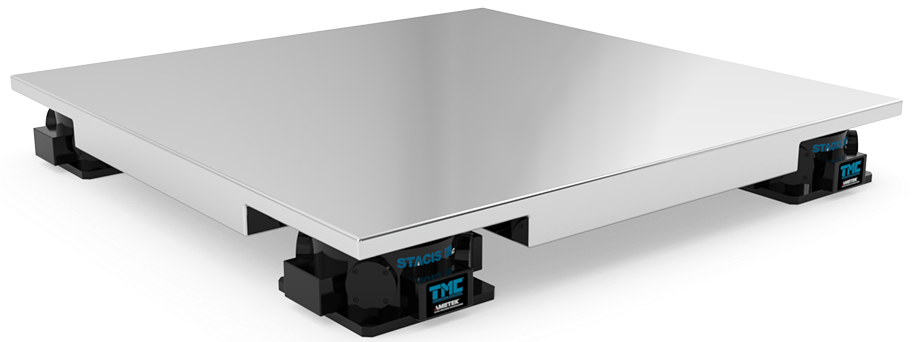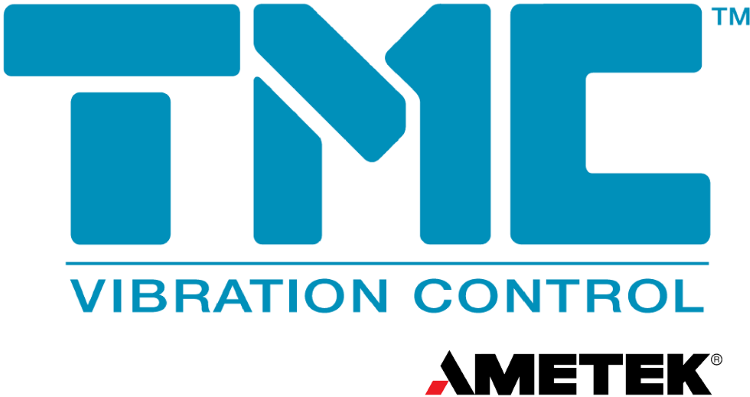The world’s most sensitive instruments for cutting-edge research are increasingly being installed in less-than-ideal conditions that include a variety of environmental and building vibration sources.
Cryo-TEM, SEM, STM, AFM, and E-Beam Lithography are examples of ultra-precision instruments that are needed to achieve exceptionally high resolution and accurate measurements on the sub-nanometer and even sub-angstrom scale.
High-resolution performance is jeopardized by building floor vibration, which stops such instruments from meeting their design specifications.
To overcome this, either design a facility to satisfy the rigorous vibration criteria of highly accurate nanotech equipment (Quiet Building approach) or choose only a point-of-use vibration cancellation under the sensitive (Quiet Island).
Quiet Buildings
Architects can easily design entire buildings to accommodate moderate floor vibration levels. Buildings that meet the ultra-low vibration levels needed for nanotech research facilities, on the other hand, are exponentially more expensive with lower returns.
Vibration levels can rise over time as a building fills up with equipment, people and activity, according to Colin Gordon & Associates. In the first 17 months, levels should rise by >15 dB [Colin Gordon & Associates. “Maturation” of the vibration environment in advanced technology facilities (2004)].
Moreover, a common method that relies on pneumatically supported concrete plinths is frequently incompatible with the tool’s internal vibration isolation systems, and plinths can magnify vibration by up to 10 times in the critical frequency range.
Concrete plinths are rigid, and their demolition is both costly and messy. Overall, designing buildings with ever-lower noise levels become unrealistic given the cost, and may not even be possible at the quietest levels. Building vibration levels would not be less than the earth below the foundation.

Plinth removal at NY Structural Biology Center.
Image Credit: New York Structural Biology Center
Why freeze the house if all that is needed is a cold beer?—The Quiet Island Concept
The [STACIS Quiet Island] seems to be working as expected. A bridge next to us opened…and there are trains, buses, and also street cars passing all day and we haven’t experienced any problems. This is fantastic.
Claudia López, PhD, Multi-Scale Microscope Core Manager, Oregon Health & Science University
Using point-of-use active vibration control with serial piezoelectric technology to reduce challenging low frequency (less than 5 Hz) vibration is a more cost-effective and successful approach for acheiving the stringent requirements of vibration sensitive tools.
The STACIS III active, piezoelectric vibration cancellation system supports a Quiet Island, which is a rigid, damped platform that matches the footprint of the instrument. It has a broad active bandwidth ranging from 0.6 to 150 Hz, as well as inertial active vibration cancellation that reduces vibrations by 90% starting at 2 Hz.
The Quiet Island substitutes a section of the raised access floor with an isolated foundation that is mounted to the sub-floor and actively cancels sub-floor vibration.
The flexibility can also be increased by placing quiet islands at specific locations where precision instruments, experiments, and research will be conducted. Unlike concrete plinths, each platform is tailored specifically to the customer’s application but can be easily reconfigured if the tool or the floor characteristics change.
Another advantage is that each Quiet Island is built to the exact specifications of the instrument layout, resulting in a more ergonomic, cleaner and acoustically superior system.
Tool facilities are more easily integrated into and around a Quiet Island’s customized shape and exposed isolated areas are minimized to lower the risk of additional vibration from user motion, mechanical flanking paths and acoustic coupling.
Finally, as the facility’s vibration levels rise over time (due to more equipment, personnel, and activity), a STACIS Quiet Island will offer additional assurance that vibration levels at the Quiet Island top will be attenuated, increasing the likelihood of sustaining an in-spec environment.

TMC Quiet Island vibration cancellation system with STACIS III isolators on risers under are raised floor.
Image Credit: TMC Vibration Control

Quiet Island in raised floor environment.
Image Credit: TMC Vibration Control

Quiet Island Enables High-Resolution Cryo TEM.
Image Credit: Oregon Health & Science University (OHSU)
New Product: STACIS Compact Quiet Island
TMC recently introduced STACIS Compact Quiet Island to match raised floor heights as low as 200 mm (7.86 in) or to facilitate installations in rooms with low ceiling heights.
A platform with “pockets” is included in the design to reduce the effective height. This Compact version, like the standard STACIS Quiet Island, offers excellent sub-Hertz active floor vibration cancellation for large equipment weighing over 1134 kg (2,500 lbs).

STACIS Compact Quiet Island.
Image Credit: TMC Vibration Control


Height comparison between the standard and Compact Quiet Island heights.
Image Credit: TMC Vibration Control

This information has been sourced, reviewed and adapted from materials provided by TMC Vibration Control.
For more information on this source, please visit TMC Vibration Control.